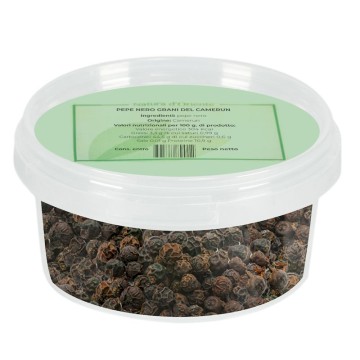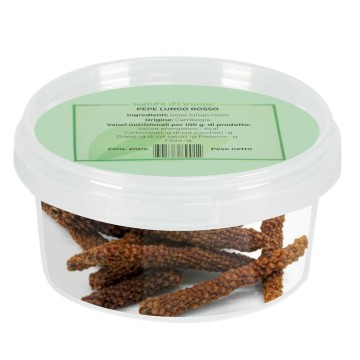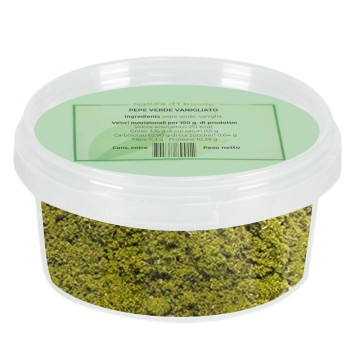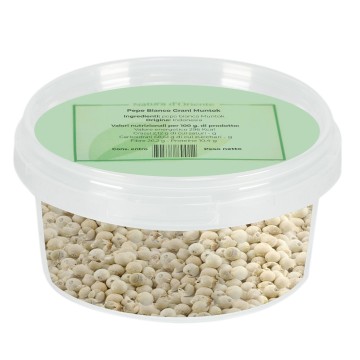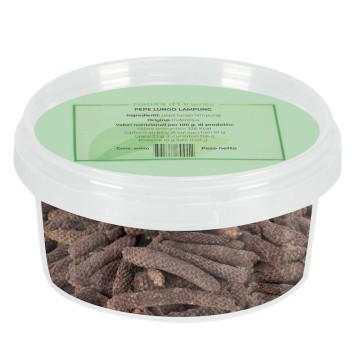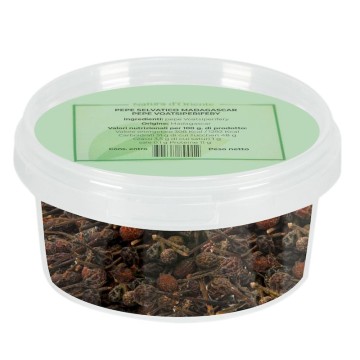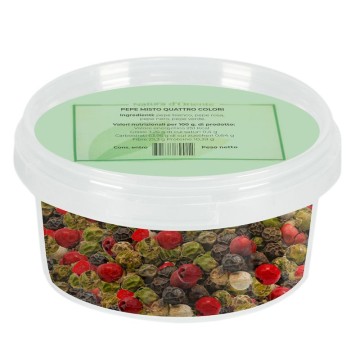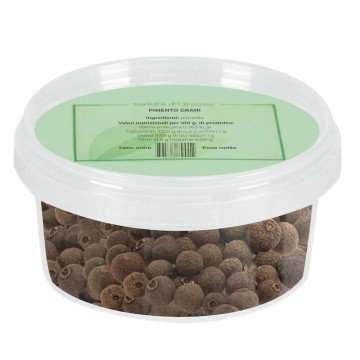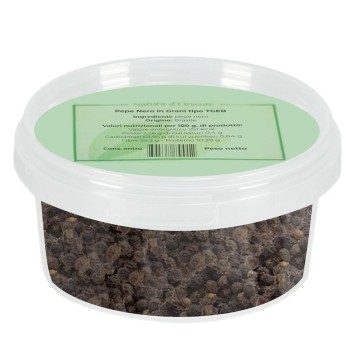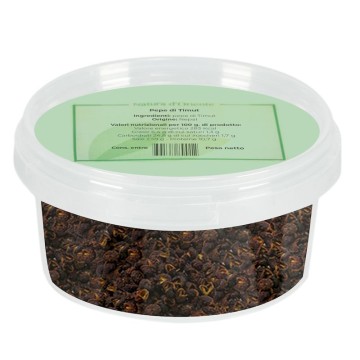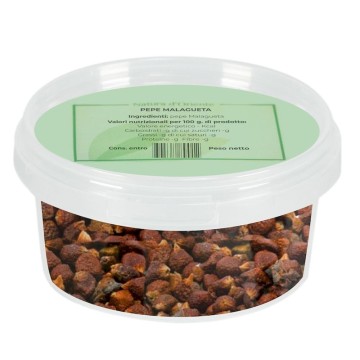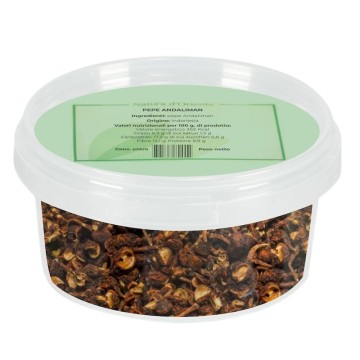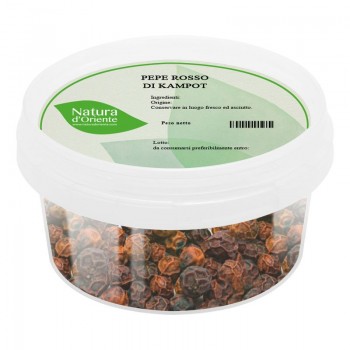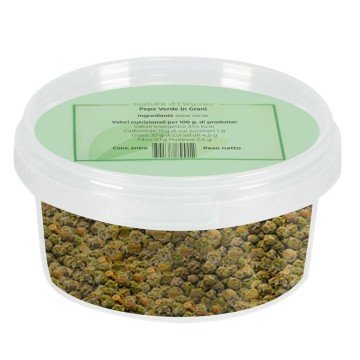White pepper is a aromatic and slightly spicy pepper , despite being obtained from the same plant from which black pepper is obtained. The different characteristics between the two spices depend on the part of the fruit used.
The plant and the fruit
The piper nigrum belongs to the piperaceae family, it is a woody vine that usually grows up to 4 meters, climbing on the stem of other plants or , in crops, on poles. The oval leaves have dimensions ranging from 5 to 10 cm in length and from 3 to 6 in diameter. It is a plant that requires a humid environment and a "rich" soil. The fruit is a berry that is first green and then dark red when fully ripe. Inside it holds only one seed.
The white pepper production process
As anticipated, white pepper is obtained from the fruit of piper nigrum, as well as black pepper, but not only green pepper also comes from the same plant.
The difference therefore lies in the production process , that is the process to which it is subjected but also the moment of harvesting. In particular, white pepper is the seed of the ripe fruit. So the ripe fruit is harvested which, as we have said, is dark red and the pulp is removed. The traditional process is a maceration obtained by leaving the fruit immersed in water for a week, after which the pulp residues are eliminated. But today biological, chemical and mechanical methods are also used. Once "clean" the seed is put to dry. Origin and cultivation A plant native to southern and south-east Asia, piper nigrum is now grown in many tropical countries where it was not originally present, even outside the Asian continent (especially in Africa). The Western world became acquainted with this spice already in ancient times and it was India that supplied the whole ancient world with it. To be clear, supply only the tables of the rich because the price remained prohibitive for those of the common people at least until the great explorations of the sixteenth century.
Properties of white pepper
On the nutritional characteristics we repeat: is it worth talking about? Obviously not, because even if pepper contains nutrients, the amount of a spice that can be consumed means that the contribution is insignificant. More interesting would be the many beneficial properties attributed by traditional medicine, the fact is that there are still few studies that confirm them beyond any shadow of a doubt. However, there is very little in white pepper from piperine, which is why it is not very spicy, in fact piperine is concentrated mainly in the peel and, in the case of varieties with larger and pulpy grains, in the pulp.
White pepper curiosities
The aforementioned production process is certainly not new, the ancient Romans already knew white pepper and used it to flavor vinegar and wine. White pepper is usually a little more expensive than black, given the process to produce it, it is not a surprise: longer processing and lower yield since only the seed is kept justify the price difference. In the tradition, also in Italy, the use of pepper in desserts is not lacking, the white one with its aromaticity and low spiciness seems even more suitable for this unusual use and in fact also in this case it goes back to the Roman world: the seeds were roasted and then they sprinkled themselves with honey. Is there anyone for whom pepper is not recommended? Unfortunately yes, piperine is an irritant of the mucous membranes, if you suffer from ulcer or gastritis you should do without it. It goes without saying that if you really don't want to give it up, white pepper with its low piperine content can be a compromise.
Ground white pepper in the kitchen
The chefs use white pepper where they need delicacy to not "kill" the dish and also for chromatic reasons, we have chosen a vegetarian recipe in which the white color predominates , White Asparagus Cream
Ingredients for 4 people
- White Asparagus 300gr
- Potatoes 300gr
- Vegetable broth to taste
- Extra Virgin Olive Oil 2 tablespoons
- Garlic 1 clove
- Salt to taste
- Ground White Pepper to taste
- Thyme 4 sprigs
Preparation
1) Clean the asparagus: slightly flex the final part of the stem in order to remove the woody one then wash them under running water.
2) After cleaning the asparagus, cut them into chunks and set aside.
3) Peel the potatoes and cut them into cubes of about one centimeter. Then set them aside together with the asparagus.
4) Heat the oil in a pan and brown the garlic clove until it turns brown.
5) Remove it and add the vegetables, salt and cover flush with the broth.
6) Cook until the potatoes are tender, adding broth so that the vegetables are always just covered.
7) Once the vegetables are cooked, blend them with the hand blender.
8) Season with salt and pepper, add the thyme leaves and serve the cream still hot, completing as desired with a drizzle of raw oil. Tip: if the cream is too liquid, put it back on the stove to thicken, if it is too thick, dilute it with the broth water.
Recipe source: Ilclubdellericette.it

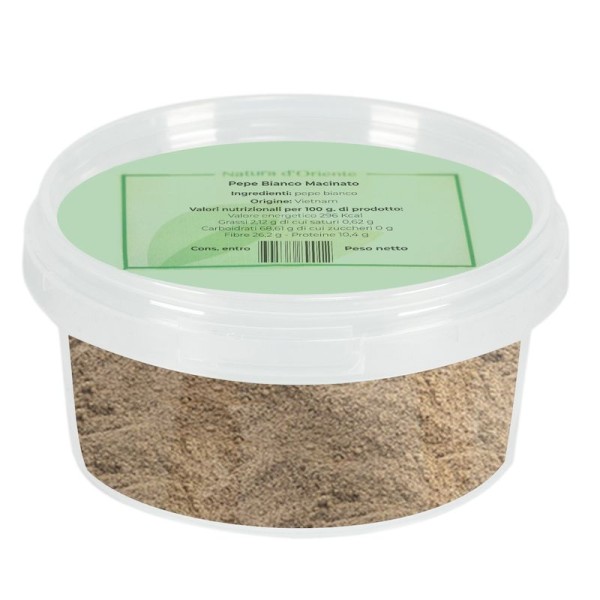







 No reward points for this product.
No reward points for this product.
